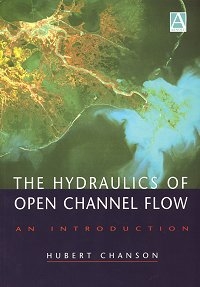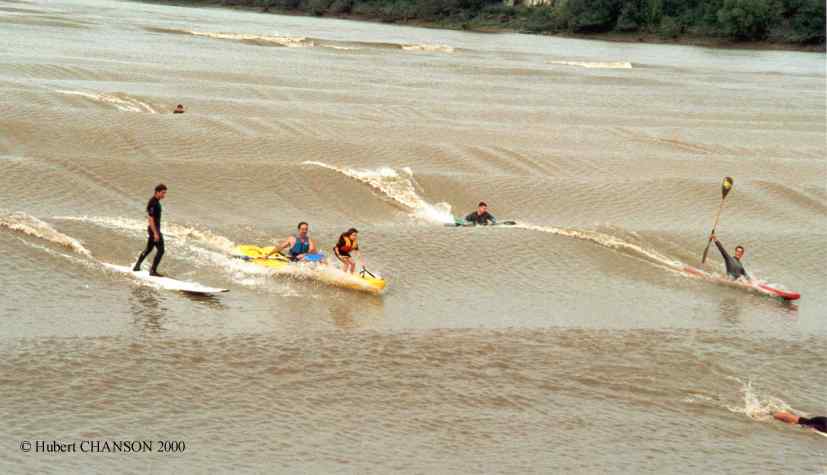 Catchment
Hydraulics (E2320)
Catchment
Hydraulics (E2320) Catchment
Hydraulics (E2320)
Catchment
Hydraulics (E2320)Generation of flows from catchments; behaviour of flows in channels; sediment transport in open channels/streams .
Subject rationale: The term 'Hydraulics' is related to the application of the Fluid Mechanics principles to water engineering structures, civil and environmental engineering facilities: e.g., canal, river, dam, reservoir, water treatment plant.In the subject, the students are introduced to the hydraulics of a catchment : rainfall, runoff and streamflow. The section "Open channel flow and sediment transport" applies the basic principles of fluid mechanics to open channel flows. Examples of open channels are natural streams and rivers. Man-made channels include irrigation and navigation canals, drainage ditches, sewer and culvert pipes running partially full, and spillways. The lecture draws upon the students' expertise in catchment hydrology and water runoff gained in Part 1. The teaching is focused on the application of the fundamental principles to open channel flow and sediment transport. The interactions between hydrology and hydraulics (e.g. rainfall and river discharge) are further discussed and the students are introduced to real-world engineering situations including failures.
The subject outline file may be downloaded : Click here (Word format). Timetable : Click there.
+ CHANSON, H. (1999). "The Hydraulics of Open Channel Flows : An Introduction." Butterworth-Heinemann, London, UK, 512 pages (ISBN 0 340 74067 1). {Support website : http://www.bh.com/companions/0340740671} [Bookshop order of book] ERRATA [NEWSLETTER PDF File]
Reviews :
{1} Professor W.H. HAGER, ETH-Zürich (Switz.), Wasser, Energie & Luft, Switzerland, 2000, No. 1/2, p. 55
"The author has succeeded in producing yet another excellent piece of work. [...] All in all, this is a well-written and carefully illustrated book which is useful for all building and environmental engineers. [...] It easily meets highest expectations."
{2} Professor M. JOVANOVIC, Belgrade, Urban Water, Vol. 1, No. 3, p. 270. {Read Full Review}
"This book stands apart from similar previously published textbooks in two ways. Firstly, its scope has significantly been extended toward applications. Secondly, by including many exercises,notes, discussions, relevant photographs,and appendices with additional information, it has an original, hand-book-like presentation, very convenient for quick referencing, and use in engineering practice. Being more than a simple introductory textbook in open channel hydraulics, this book can be strongly recommended to students and engineers."
{3} RAJARATNAM, N. (1999), Review for Edward Arnold, University of Alberta, Canada : "This manuscript is well written ans covers : the basics of open channel flows; uniforme and gradually varied flows; sediment transport; physical modelling and has a very good treatment of Hydraulic Structures. It has also numerous interesting historical notes. There also [are a] number of interesting problems."
{4} MONTES, J.S., and HOLLOWAY, D. (1999), Review for Edward Arnold, University of Tasmania, Australia : "[The book] is an Introduction to a very complex subject, and as such we think that it [will] be developed into a very distinct and useful text.[ ...]. It has undeniable unity and character and, with its unusual analysis of historic cases of Hydraulic Design, it [will] provide the student with a very attractive first view of this topic. The book is [....] quite different from the well known textbooks (Ven Te Chow, Henderson and French). It contains some great new material, in the form of a glossary, symbol list, many interesting photos and biographical notes, as well as additional notes that elucidate particular points within each Chapter."
3. Froude Number
4. Properties of Common Open-Channel Shapes
Applications of the Momentum Principle : Hydraulic Jump, Surge,
Flow
Resistance in Open Channels
2. Hydraulic jump
A hydraulic jump is a transition from a rapid
(supercritical
flow) to a slow flow motion (subcritical flow). Although the hydraulic
jump was described by LEONARDO DA VINCI, the first experimental
investigations
were published by Giorgio BIDONE in 1820. Experimental observations
highlight
different types of hydraulic jumps, depending upon the Froude number of
the upstream flow. An undular hydraulic jump is observed at low Froude
numbers (1< Fr <3): looking downstream (Fr=1.2)
and sideview (Fr=1.6). With increasing
Froude numbers, other types of jumps include weak jump, oscillating
jump
(3.5< Fr <4.5), steady jump
and
strong
jump (Fr >10).
These photographs show surfers riding on a hydraulic
jump roller (Photo No. 1, Photo
No. 2, courtesy of Dale YOUNG).
3. Surges and Tidal Bores
A surge in an open channel is a sudden change of
flow depth (i.e. abrupt increase or decrease in depth). An abrupt
increase
in flow depth is called a positive surge while a sudden decrease in
depth
is termed a negative surge. This picture shows an undular
surge (propagation from left to right).
A bore is a positive surge of tidal origin. Tidal
bores occur as the tidal flow turns to rising (e.g. Lynch
1982). Famous ones include the Hangchow (or Hangzhou) bore on the Qiantang
river (photo: (1),
(2) ), the
Amazon bore called pororoca (photo: (1),
(2)
; info: (3) ), the
tidal
bore on the Seine river (mascaret) (photo: (1)
), the Hoogly (or Hooghly) bore on the Gange, the bore on the Mekong
river.
Smaller tidal bores occur on the Severn river near Gloucester, England
(photo :
(1),
(2)
, (3) ), on
the
Trent river (aegir) (photo: (1)),
on the Garonne and Dordogne rivers, France (photo: (1),
(2)
; info: (3) ), at Turnagain Arm and Knik
Arm,
Cook Inlet (Alaska) (info:
(1)
; photo: (2) ), the
bores
in the Bay of Fundy (New Brunswick, Nova Scotia) like at Petitcodiac
(info:
(1)
), tidal bores on the Styx river QLD and on the Daly river NT
(Australia),
the tidal bore called benak at Batang Lupar (photo (1)).
The front of a positive surge absorbs random
disturbances
on both sides of the surge and this makes the positive surge stable and
self-perpetuating. With appropriate boundary conditions, a tidal bore
may
travel long distances upsteam of the river mouth. For example, the
tidal
bore on the Pungue river (Mozambique) is still about 0.7 m high about
50
km upstream of the mouth and it may reach 80 km inland.
Hubert Chanson saw the tidal bore of the Dordogne
river on 27 Sept. 2000 (5:00pm). The bore propagates first in the
Gironde
before separating and continuing both in the Garonne and in the
Dordogne
(Map).
At St Pardon, the tidal bore was an undular bore on the 27 Sept. 2000.
Photographs No. 1 and 3 illustrate well the undular nature of the
positive
surge. Photo No. 1 shows the
arriving bore.
Photo No. 2 illustrates
kayacks and surfers riding the bore.
Photo
No. 3 was taken just downstream of St Pardon while Photo
No. 4 was shot in front of St Pardon.
More pictures of tidal bores are here.More about the tidal bore (mascaret) of the Seine river ...
Open channel hydraulicsTutorial 1 : Part 1 (14 Feb. 2000), Part 2 (17 Feb. 2000).Text book exercises : http://www.arnoldpublishers.com/support/chanson/exercises/default.htm.
Tutorial 2 on the application of the Bernoulli principle to open channel flows : Part 1 (20 Feb. 2000), Quizz (9 Mar. 2000) and solutions.
Tutorial 3 on the application of the momentum principle to open channel flows : Part 1 (3 Mar. 2000, updated 16 Mar. 2000, 20 June 2000).
Tutorial 4 on sediment properties and onset of sediment motion in open channels : Part 1 (14 Mar. 2000).
Tutorial 5 on sediment motion : Part 1 (4 May 2000).Mid-Semester test : Solution (20 Apr. 2000).
 Tidal bore on the Dordogne river (27/9/2000)
Tidal bore on the Dordogne river (27/9/2000)Open channel hydraulicsGeneral information - Experiment description (29 Feb. 2000)
Two experiments are performed. : a study of a broad-crested weir overflow (photo) and the hydraulic jump (photo). The former (broad-crested weir) is a smooth transition from an upstream sub-critical flow to a downstream supercritical flow. The latter (hydraulic jump) is the transition from an upstream supercritical flow to a downstream subcritical flow.
Rating : [***] = superb, must see - [**] = excellent
Rivers Seen from Space [**]
EPA Multimedia projects (USA) (computations, remote sensing)
Structurae, International Database and Gallery of Structures [**]
Gallery of Photographs in Fluid Mechanics, Hydraulic & Environmental Engineering and Engineering History
California 1997 Flood Images
Chicago Calumet waterway: sidestream aeration cascades
Petit-saut dam (French Guyana)
US Army Corps of Engineers, Walla Walla district [Photographs are listed Here]
US Army Corps of Engineers, Portland district, Photofile [**]History of arch dams
The Rideau Canal (Canada) incl. the 1831 Jones Falls arch dam [*]
Steel damsTimber Crib Weirs in Queensland, Australia
Air entrainment on chutes spillways
Rubber dams
Minimum Energy Loss (MEL) culverts and bridge waterways
Embankment overflow stepped spillways: earth dam spillways with precast concrete blocks
Dr Lockington's E2320 home page
El Niño Information in California
The tidal bore of the Seine river
Mount St. Helens (USA), debris and mud flows, Photofile [**]
French Naval and Hydrographic Service SHOM [**]
Tidal bore (mascaret) of the Seine river
Photographs of tidal bores (incl. mascaret, pororoca)Tide calculations worldwide (in French)
Coastal engineering web page of Dr Robert A. Dalrymple
Tsunami : Information - Photographs
University of Queensland LibraryThis page was visited :Measurement systems : SI Units and significant figures
Reprints of Research Papers in Water enginering
ICEnet: The Institution of Civil Engineers Homepage
Japan Society of Civil Engineers
ASCE - American Society of Civil Engineers Homepage
ASME Meetings & Exhibits Frames IndexENPC
Welcome to the IAHR homepageUS Geological Survey
Civil Engineering Resources on the Internet (GuideMe.com)Highlights in the History of Hydraulics by Hunter ROUSE
Back to Dr Chanson's Home Page